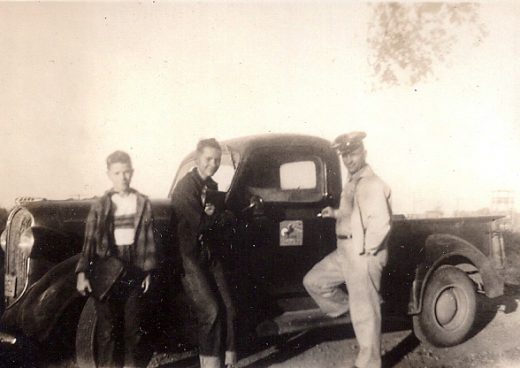“Deeper” and “broader” are words that come to mind when I think about Fall 2017 exhibitions and programs at the museum. They represent connections with K-State departments and Kansas communities that are deeper and broader than ever before. From the residency activities of Ubiquitous artist Enrico Isamu Ōyama, to the youth and school programs in conjunction with Sayaka Ganz’s Reclaimed Creations, to the glimpse of our regional past in Thrift Styles, to the Fronteras/Frontiers exhibition’s ambitious community outreach – these artistic projects will touch many lives!
I hope you will visit the Marianna Kistler Beach Museum of Art often during this busy fall to encounter the interesting sights created and ideas proposed by these exhibitions and related programs. The museum aims to serve as a window to the world and to offer an invitation to think anew about this place, the Flint Hills and tall grass prairie of Kansas. We hope you agree that we are fulfilling our mission. Please join us in these adventures! And please note the listings of generous donors who make this work possible. They deserve our hearty and sincere thanks.
Linda Duke, Director
The Beach Museum of Art office and galleries will be closed November 23-25, 2017 and December 24, 2017 through January 1, 2018.
Sayaka Ganz: Reclaimed Creations
September 5 – December 9, 2017
In her sculpture, Sayaka Ganz uses reclaimed plastic objects such as discarded utensils as a painter uses brush strokes. She describes her style as “3D impressionism”: The recycled objects appear unified at a distance, but at close proximity, individual objects are discernable. Sculptures in this exhibition include animals in motion that are rich in color and energy. Ganz was born in Yokohama, Japan, and grew up living in Japan, Brazil, and Hong Kong. She holds a master of fine arts degree in sculpture from Bowling Green State University in Ohio. The Tour of “Sayaka Ganz: Reclaimed Creations” is produced by David J. Wagner, L.L.C., David J. Wagner, Ph.D., Curator/Tour Director.
Ubiquitous: Enrico Isamu Oyama
August 15 – December 23, 2017
Enrico Isamu Ōyama represents a contemporary generation with a distinctly global perspective. Child of an Italian father and a Japanese mother, Ōyama grew up in Tokyo, Japan, lived for extended periods in North Italy, and has been working in New York since 2011. “Ubiquitous” surveys how Ōyama channeled his interests in Tokyo and American street cultures, Western abstract art, and Japanese calligraphy to create Quick Turn Structure (QTS), his signature expression. Appearing across a wide range of creative platforms, including painting, digital media, sound, and fashion, QTS gives visual form to the mixed-race, multicultural, transnational experiences of people in today’s world of fluid borders and interconnectivity.
Thrift Style
August 1 – December 16, 2017
The reuse of feed, flour, and sugar sacks in clothing and other household objects became popular during the mid-1920s. Businesses capitalized on interest by introducing bags with increasingly varied printed patterns. The sacks and other fabric scraps from manufacturers continued to serve thrifty home sewers during the Great Depression and into the 1960s. A collectors market for the bags and fabric remnants thrives today. This exhibition will explore the recycling of fabrics in clothing and quilts drawn from the collection of the Historic Costume and Textile Museum of Kansas State University. Varied feed bags from a 2016 gift to that museum will highlight the range of print motifs available to twentieth-century home sewers.
